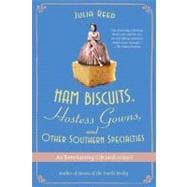
What is included with this book?
JULIA REED is a contributing editor at Newsweek, where she writes the magazine's Food and Drink column. She is author of Queen of the Turtle Derby and Other Southern Phenomena and The House on First Street, My New Orleans Story. Reed lives in New Orleans.
"Julia Reed is another Southern writer with a fine hand for storytelling and cooking. Though you'll want to cook from her book, first you'll want to take it to the porch hammock to read. Each tasty tale - from her collard green chronicle to her Frozen Assets anecdote on ice cream - will whet your appetite for more."--The Post and Courier (SC)
“[A] charming collection. Reed's wit and her eye for the telling historical detail shine through.” –The Times Picayune
"No matter what your tastes, Ham Biscuits has something to tempt your taste buds."--The Clarion Ledger
The New copy of this book will include any supplemental materials advertised. Please check the title of the book to determine if it should include any access cards, study guides, lab manuals, CDs, etc.
The Used, Rental and eBook copies of this book are not guaranteed to include any supplemental materials. Typically, only the book itself is included. This is true even if the title states it includes any access cards, study guides, lab manuals, CDs, etc.